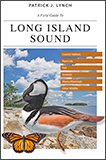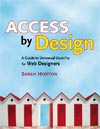1 Process
Initial Planning
Web sites are developed by groups of people to meet the needs of other groups of people. Unfortunately, web projects are often approached as a “technology problem,” and projects can get colored from the beginning by enthusiasms for particular web techniques (Flash, blogs, podcasts, Ajax), not by human or business needs that emerge from engaging users in the development process. People are the key to successful web projects at every stage of development.
Although the people who will visit and use your site will determine whether your project is a success, ironically, those users are the people least likely to be present and involved when your site is designed and built. Remember that the site development team should always function as an active, committed advocate for the users and their needs. Experienced committee warriors may be skeptical here: These are fine sentiments, but can you really do this in the face of management pressures, budget limitations, and divergent stakeholder interests? Well, yes, you can—because you have no other choice if your web project is to succeed. If you listen only to management directives, keep the process sealed tightly within your development team, and dictate to supposed users what the team imagines is best for them, be prepared for failure. Involve real users, listen and respond to what they say, test your designs with a spectrum of users of different ages, abilities, and interests, and be prepared to change and evolve your cherished ideas in response to user feedback, and your project will be a success.
Thoroughly understand and communicate your top three goals
A short statement identifying two or three goals should be the foundation of your web site design. The statement should include specific strategies around which the web site will be designed, how long the site design, construction, and evaluation periods will be, and specific quantitative and qualitative measures of how the site’s success will be evaluated. This initial statement will form the basis for your project plan (see Developing a Project Charter, below). Building a web site is an ongoing process, not a onetime project with static content. Long-term editorial management and technical maintenance must be covered in your budget and production plans. Without this perspective your electronic publication will suffer the same fate as many corporate communications initiatives—an enthusiastic start without lasting accomplishments.
Know your audience
Identify the potential audience for your web site so that you can structure the site design to meet their needs and expectations. The knowledge, background, interests, and needs of users will vary from tentative novices who need a carefully structured introduction to expert users who may chafe at anything that seems to patronize them or delay their access to information. A well-designed system should accommodate a range of skills and interests. For example, if the goal of your web site is to deliver internal corporate information, human resources documents, or other information formerly published in paper manuals, your audience will range from those who will visit the site many times every day to those who refer only occasionally to the site.
Web analytics as a planning tool
One of the great things about the web as a communications medium is that it can provide a rich stream of data on how your site is used, what people are looking for, and how users typically traverse the various parts of your site. If you are redesigning an existing site, take a close look at the web server logs from the server that hosts the site and work with your webmaster to develop reports on how the site is currently used and on trends of use over time. In addition to providing gross traffic volume on your site and your most popular pages, web logs can give you detailed information on where your current users come from, what sites they visited before coming to yours, what search terms brought them to your web site, what kind of network connection they use, what size their computer screen is, and which operating system and web browser they use. If the data from your existing web hosting arrangement isn’t adequate or is poorly formatted for analysis by your team, consider using tools such as Google Analytics to generate easy-to-read reports on your current site traffic as you plan the revised site.
Don’t overlook search analytics in your data reviews. If your local enterprise or intranet uses a search engine such as Ultraseek Enterprise Search, Google Search Appliance, or other enterprise search tool, you have access to rich data on what people were searching for when they came to your site. Look closely at the most popular search terms for your site, and match those terms against your current site navigation links to be sure that popular content items are easily accessible. If people are entering search terms for things that you think should be obvious on your site, your navigation interface probably needs an overhaul. The conventional wisdom in web design is that about half of web users prefer to search for keywords, while the other half prefer to browse through pages and lists of links. Your search analytics reports are a powerful feedback tool for assuring that your new design meets the needs of both searchers and browsers.
Design critiques
Each member of a site development team will bring different goals, preferences, and skills to the project. Once the team has reached agreement on the mission and goals of the project, you’ll need to establish consensus on the overall design approach for the web site. The object at this stage is to identify potential successful models in other web sites and to begin to see the design problem from the site user’s point of view.
Unfortunately, production teams rarely include members of the target audience for the web site. And it is often difficult for team members who are not already experienced site designers to articulate their specific preferences, except in reference to existing sites. Group critiques are a great way to explore what makes a web site successful, because everyone on the team sees each site from a user’s point of view. Have each team member bring a list of several favorite sites to the critique, and ask them to introduce these sites and comment on the successful elements of each design. In this way you will learn one another’s design sensibilities and begin to build consensus on the experience that your audience will have when they visit the finished site.
Content inventory
Once you have an idea of your web site’s mission and general structure, you can begin to assess the content you will need to realize your plans. Building an inventory or database of existing and needed content will force you to take a hard look at your existing content resources and to make a detailed outline of your needs. Once you know where you are short on content you can concentrate on those deficits and avoid wasting time on areas with existing resources that are ready to use. A clear grasp of your needs will also help you develop a realistic schedule and budget. Content development is the hardest, most time-consuming, and most consistently underestimated part of any web site development project. In many instances your team will be looking to the sponsor to provide content or domain experts. Be sure your sponsor or client understands the responsibilities and takes the content delivery deadlines seriously. Starting early with a firm content development plan will help ensure that you won’t be caught later with a well-structured but empty web site.









